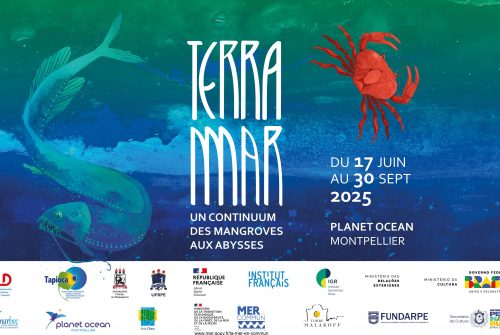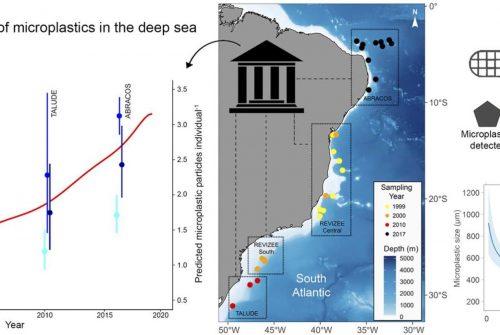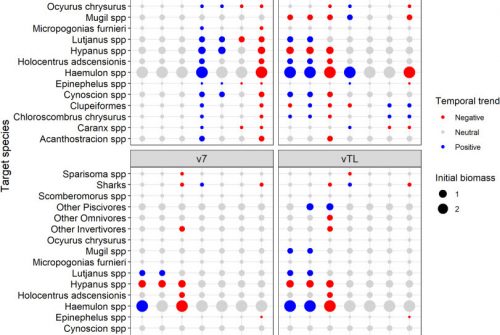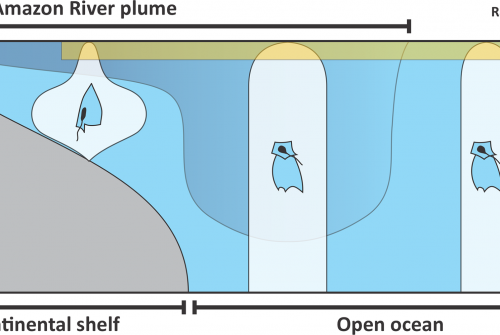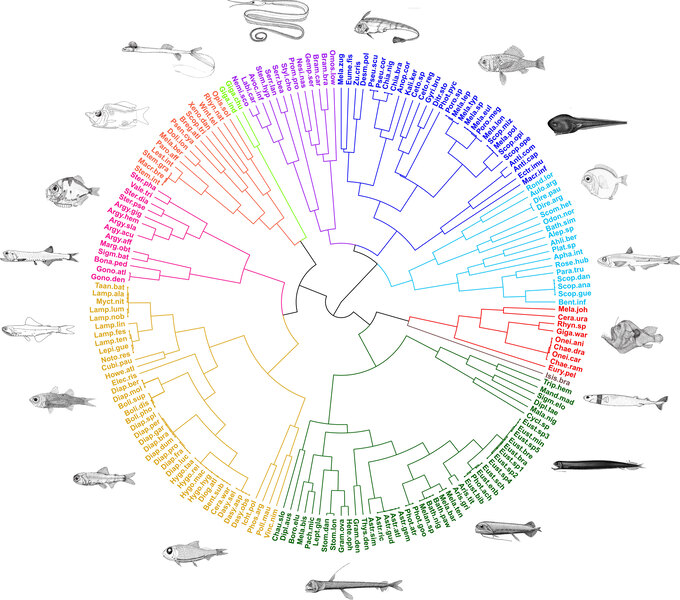
Mesopelagic zones (200–1,000-m depth) are characterized by relatively low light levels, cold waters, and often limited oxygen, forming a stable yet challenging habitat for their inhabitants. To overcome these constraints, mesopelagic fishes have developed several adaptations that enable them to participate in crucial ecosystem processes such as nutrient cycling, carbon transport, and provisioning of harvestable fish stocks. However, our understanding of the functional diversity of mesopelagic fishes remains limited, while it is of particular importance considering the increase in human threats and possible environmental changes in the deep ecosystems. In this context, functional diversity emerges as a powerful tool and can help assess community assembly rules, including species complementary and redundancy. Here, we take advantage of scientific surveys that collected 200 species taxa identified from over 7,000 specimens to determine the functional diversity of mesopelagic fish assemblages across depths and the day–night period. We created a data set of 17 qualitative functional traits related to feeding, survival, and locomotion functions. Based on this information, functional spaces and diversity indices were calculated, and functional groups were established. Furthermore, the influence on the functional diversity of environmental variables and the day–night period was assessed by generalized additive models (GAMs). The hypothesis of functional complementary was tested. Overall, mesopelagic fishes displayed a high functional diversity and could be grouped into 10 major functional groups. Moreover, 107 species exhibited a unique composition of functional trait values, revealing a vast complementarity of functions within the deep-sea ecosystem. We also showed that functional diversity in mesopelagic ecosystems is neither static nor homogeneous, exhibiting higher values in the deepest layers and varying between day and night. We finally discuss processes that may structure mesopelagic fish assemblages and the implications of our findings for the conservation mesopelagic fishes.
DOI: doi.org/10.3389/fmars.2023.1117806
Reference
Aparecido, K. C., Frédou, T., Nole Eduardo, L., Mincarone, M. M., Siqueira Lima, R., da Silva Morais, M. F., & Mérigot, B. (2023). Living in darkness: functional diversity of mesopelagic fishes in the western tropical Atlantic. Frontiers in Marine Science, 10.



